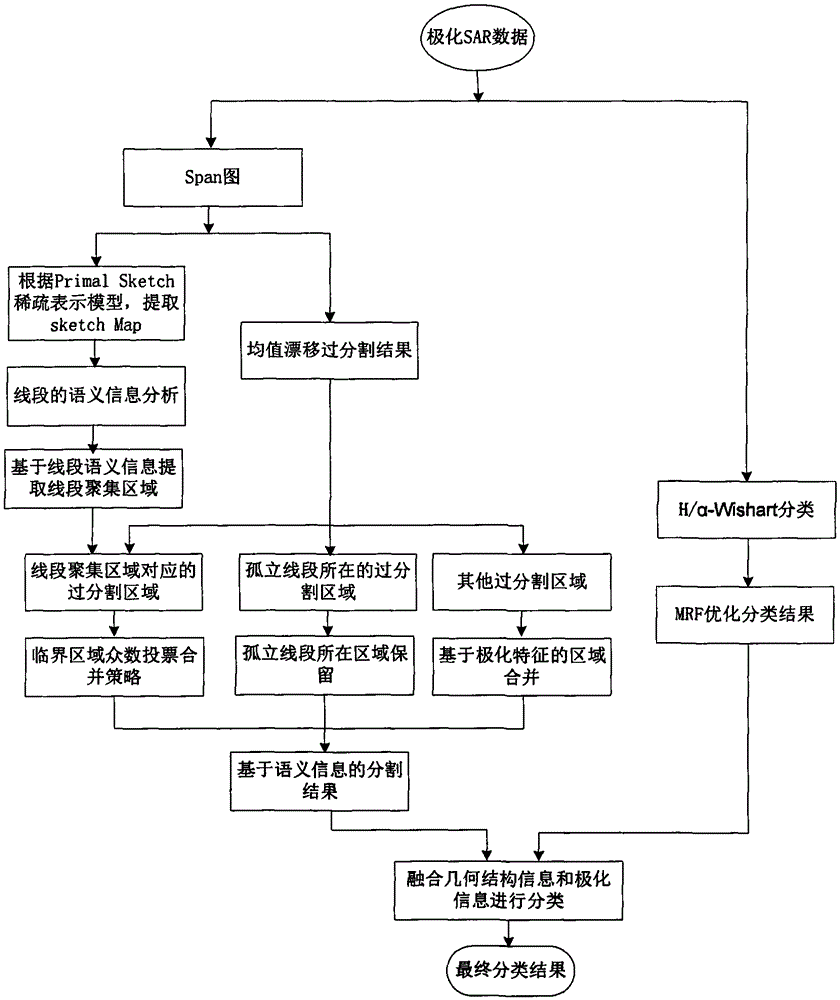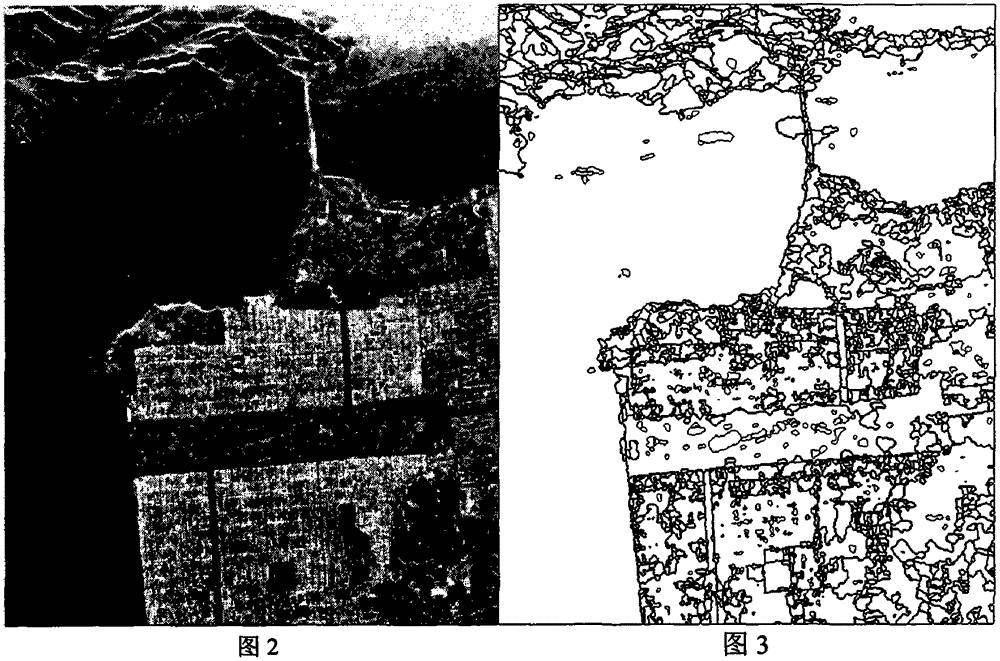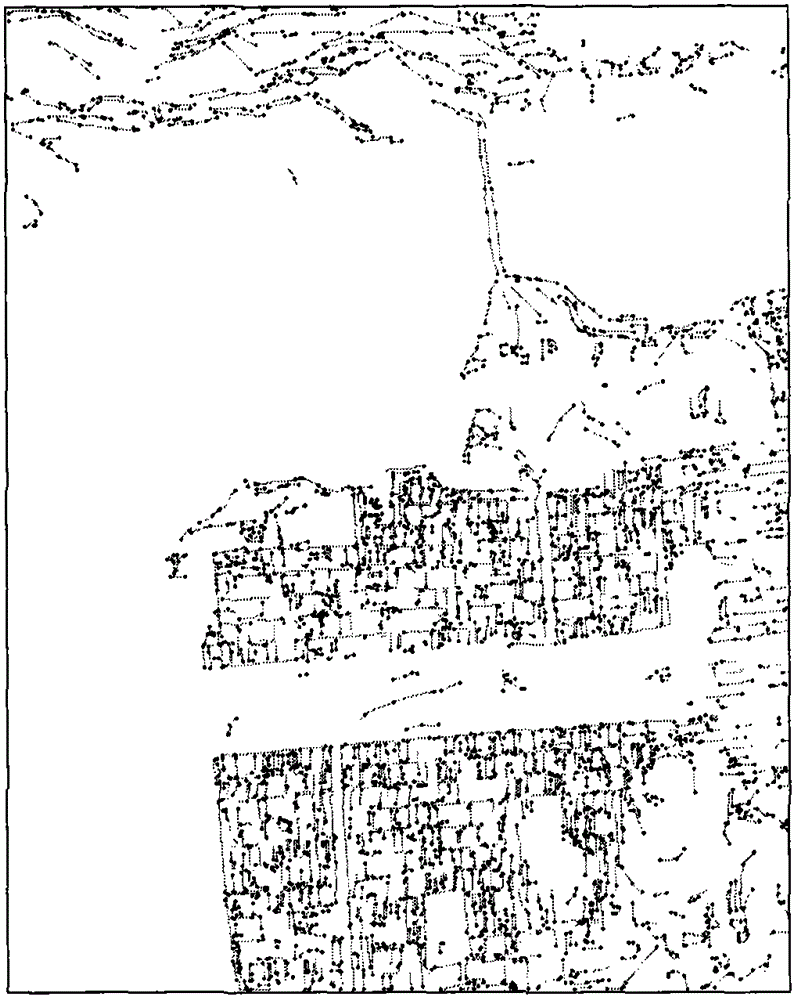Classification Method of Polarimetric SAR Objects Based on Semantic Information and Polarization Decomposition
A technology of semantic information and polarization decomposition, which is applied in the field of image processing and remote sensing, can solve problems such as poor consistency of classification regions, poor regional consistency, and the boundary is easily affected by noise, so as to achieve the effect of improving regional consistency
- Summary
- Abstract
- Description
- Claims
- Application Information
AI Technical Summary
Problems solved by technology
Method used
Image
Examples
Embodiment 1
[0034] The present invention is a polarimetric SAR object classification method based on semantic information and polarization decomposition, and performs unsupervised object classification for low-resolution polarimetric SAR images obtained in advance. figure 1 , the classification process implementation steps of the present invention include:
[0035] Step 1, input the data of the polarimetric SAR image to be classified, process the polarimetric SAR data, obtain the amplitude values of the three channels of the polarimetric SAR data, and fuse the amplitude values of the three channels to obtain the backscatter of the polarimetric SAR image total power graph, such as figure 2 Shown is the span diagram of the fully polarized SanFrancisco data in the NASA / JPLAIRSARL band. Use the mean shift on the span graph to obtain the over-segmentation result graph of the span graph; and extract the edge and ridge sketch of the span graph composed of line segments according to the pri...
Embodiment 2
[0081] The classification method of polarimetric SAR ground features based on semantic information and polarization decomposition is the same as that in embodiment 1, and the simulation data and images are described as follows:
[0082] 1. Simulation conditions
[0083] (1) Select the full polarization SanFrancisco data of NASA / JPLAIRSARL band;
[0084] (2) In the simulation experiment, the value of the parameter N in the PrimalSketch sparse representation model is 3, the value of M is 18, and the value of the threshold ε is 20;
[0085] (3) In the simulation experiment, the number of neighbors k is 9;
[0086] (4) In the simulation experiment, the seed segment threshold δ 1 Take 20; line segment growth threshold δ 2 take 12;
[0087] (5) In the simulation experiment, the region merging threshold U is set to 0.7;
[0088] (6) In the simulation experiment, the neighborhood window is selected as 3*3 in the MRF-based H / α-Wishart classification.
[0089] 2. Simulation conten...
Embodiment 3
[0092] The polarimetric SAR ground object classification method based on semantic information and polarization decomposition is the same as embodiment 1-2, wherein the H / α-Wishart classification method based on MRF is the same as step 5 in embodiment 1, as a comparative experiment of the present invention, simulation The data and results are as follows:
[0093] 1. Simulation conditions
[0094] (1) Select the full polarization SanFrancisco data of NASA / JPLAIRSARL band;
[0095] (2) In the simulation experiment, the neighborhood window selection in the MRF-based H / α-Wishart classification is 3*3.
[0096] 2. Simulation content and results
[0097] Using the full-polarization SanFrancisco data of NASA / JPLAIRSARL band, the H / α-Wishart classification method based on MRF is used for classification, which is a classification method based on pixel points. Figure 12 is a span graph, Figure 13It is the result of the MRF-based H / α-Wishart classification method. It can be seen fr...
PUM
 Login to View More
Login to View More Abstract
Description
Claims
Application Information
 Login to View More
Login to View More - R&D Engineer
- R&D Manager
- IP Professional
- Industry Leading Data Capabilities
- Powerful AI technology
- Patent DNA Extraction
Browse by: Latest US Patents, China's latest patents, Technical Efficacy Thesaurus, Application Domain, Technology Topic, Popular Technical Reports.
© 2024 PatSnap. All rights reserved.Legal|Privacy policy|Modern Slavery Act Transparency Statement|Sitemap|About US| Contact US: help@patsnap.com










